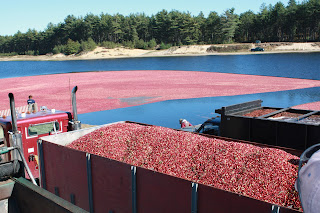I remember that as I child, all I wanted to do was find a way to preserve those leaves so I could enjoy them in the dark winter months. I tried many methods, including the fairly well-known practice of ironing leaves between two pieces of waxed paper and hanging them in front of a window. This exercise was fun, but the bold colors didn't last long.
A couple of years ago I had a new idea, this time inspired my my kids' same desire to preserve their leaves.
Leaf Placemats
 Here's what you need:
Here's what you need:- an assortment of leaves. Gather a variety of shapes and colors.
- white glue
- 11 X 17 paper (We used copy paper weight but any paper will do).
- access to a color copy center an hour or two after finishing the project
- clear contact paper or access to a copy center that does laminating
- Take a nature hike with your kids. Collect leaves together. (If hiking in public a place, such as an arboretum, be aware that collecting may not be allowed). While you're walking, take advantage of the time together. Talk about which leaves you like and why. Note the shapes of the leaves. Try to find which trees your leaves came from.
- Bring your leaves home. Before rushing right into the craft, give your kids a chance to explore the leaves a bit. Maybe they'd like to sort them in some way or talk about them with you. Glue the leaves onto the 11 X 17 paper. Kids as young as 2 can participate in this with parent support. Ask the children where they want glue and help them apply it. Then they can stick the leaves down. Encourage older kids to make a pleasing design. Note: the leaves do not need to be securely glued in all places. They just need to last long enough to make a copy.
- As soon as the glue is dry, take them to the copy center and make color photocopies. (The cost varies but is around $1.00 per sheet). If you wait, the leaves will start to fade, so the results will not be as good. The quality of photocopies today is terrific. They'll look exactly like your creations.
- To preserve the placemats, have the copy center laminate them. This is not a cheap process, so confirm the cost before placing your order. An alternative is to mount them on sturdy paper and cover them with clear contact paper. Public libraries sometimes have laminating machines and may allow you to use them for a fee. (I laminated ours at our public library). These coverings allow you to wipe the placemats clean with a damp cloth (DO NOT submerge them in water). We made ours 3 years ago and they're still in good condition.
 |
| Be careful of these leaves, though. That's poison ivy! |
Leaf Rubbings
Materials:
- Assortment of leaves
- Light weight paper such as regular copy paper
- crayons
- tape
Procedure
- Arrange the leaves upside down (vein side up) on a piece of paper.
- Carefully place another piece of paper on top. Tape it down.
- Using the side of a crayon, gently rub across the surface of the paper. The leaves' shapes and veins will be revealed in the rubbing. This process is magical for young children as the leaves "suddenly" appear.
- Experiment with different colors. Even though my daughter loves pink, it was not a satisfying color for this project. Her favorite was a deep blue that clearly revealed the veins.
- Ask the kids to embellish the rubbings, or not, as they feel inspired.
- You can then frame these pieces or laminate them as above.
For my readers from regions where leaves don't turn or who are overseas... try a project like this using flowers and green leaves. You'll need to gently flatten the flowers enough that they can sit on the deck of a copy machine.
Have you tried projects like these? Will you try one now? What other ideas do you have for preserving our beautiful fall leaves (or flowers)?


















